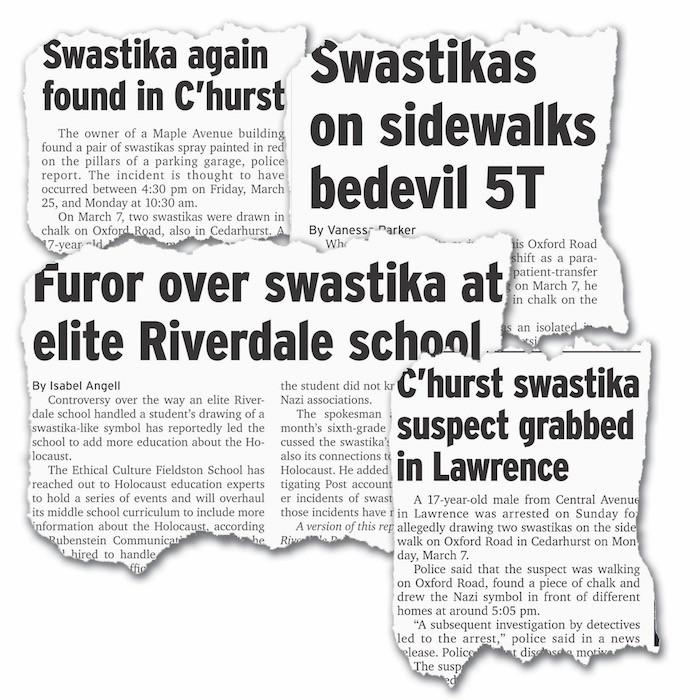Responding to swastikas: Teach our children well
Michael D. Cohen is Eastern Director, Simon Wiesenthal Center / Museum of Tolerance in New York.
My eldest son is nine years old and in third grade. He understands that the name Hitler represents evil and that the word Nazi is one equated with the destruction of the Jewish people of which he is a part. I am not sure if at this early stage he recognizes the swastika or truly comprehends its emotional significance to the Jewish people just three generations removed from the Holocaust.
My son’s current state of swastika recognition, I know as a father, is appropriate for his age and level of maturity. And I know that as a participant in the yeshiva education system, and as the son of a senior executive of an institution dedicated to the memory of the six million Jews who perished in the Holocaust, the lessons of “never again” are ever present in his young life.
Unfortunately, we in the Jewish community, regardless of religious persuasion, socioeconomic background, or ancestral origin, have largely not taken seriously enough the loss of emotional attachment in the first generation experiencing Holocaust education in the absence of a plethora of survivors.
A few months ago, in partnership with Riverdale’s Ethical Cultural Fieldston School, the Simon Wiesenthal Center arranged a Holocaust education program for its middle school. We began with a short film that I believed would stimulate student responsiveness. However, it wasn’t until later in the program, when 90 year old survivor Hanna Slome told her personal account, that one could sense that a true connection was made with the student body. As iPads, iPods and iPhones dropped out of sight, hands raced high into the air for questions faster than principal and moderator Kevin Jacobsen could hope to call on them. They had been emotionally reached.
As I read about swastikas being drawn on Oxford Road in Cedarhurst, at Five Towns Long Island Railroad stations and other places in heavily Jewish communities, what strikes me most are the storylines detailing the age of the perceived suspects: teenagers.

 50.0°,
Light Rain
50.0°,
Light Rain 







